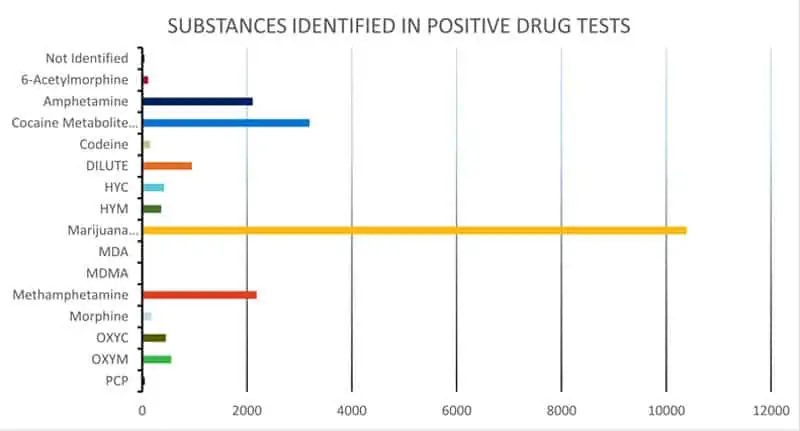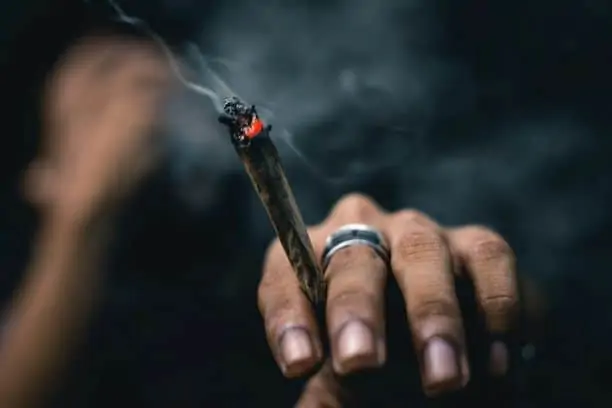By Chuck Robinson, Land Line
Marijuana users, a monthly report from the Federal Motor Carrier Safety Administration Drug and Alcohol Clearinghouse has a none-too-subtle warning for you.
According to a report for May, its first, marijuana was by far the leading illegal substance detected in positive drug tests submitted to the Clearinghouse. There were 10,348 positive drug tests for marijuana. The next largest number was for cocaine, with 3,192 positive drug tests. This report covers data from the Clearinghouse’s inception on Sept. 28, 2019, through the end of May.
Marijuana positive drug tests numbered more than those for cocaine, meth and amphetamines combined. Of course, there was likely overlap. Users of the other drugs may well also toke a joint or enjoy an edible from time to time. Or use a CBD product.

Potentially a serious problem
In general, the Clearinghouse statistics seem accurate, said Amber Schweer, supervisor of CMCI, a wholly owned subsidiary of the Owner-Operator Independent Drivers Association that manages DOT drug and alcohol testing. “With the legalization of marijuana in so many states, as well as the increased use of CBD oil, I can see why those stats would be so high,” Schweer said. “There is a huge misconception that just because it is legal on the state level that it will be OK on the federal level. That is not that case.”
Products with CBD oil compound the problem. Even though CBD products don’t get you high, they derive from the same species of plant as marijuana. Though a label might say it has no psychotropic THC in it or it’s below the legal maximum of 0.03% THC, there is no federal oversight to ensure the labels are accurate. What’s more, U.S. DOT says a driver claiming to have used CBD products is not an acceptable explanation for a positive test for marijuana.
“There are so many companies that claim you won’t test positive using their product when in reality they cannot guarantee that,” Schweer said. “Drivers are not heeding the warnings that are put out there and unfortunately are facing expensive and detrimental consequences to their career.” A positive drug test can severely limit a driver’s options, Schweer warned. Most larger carriers have a zero-tolerance policy regarding drug and alcohol use, she said. If a driver has a positive drug test, they won’t be hired, no matter how long ago the driver had a positive test. That means a driver’s best option will be smaller carriers and mom-and-pop operations, where a driver might be able to talk with someone and explain the situation and hope to get a chance.
Guidance, if needed
If a driver finds him- or herself having to deal with a positive drug test, CMCI and OOIDA can offer guidance and advice on how to get back into compliance, Schweer said. CMCI can help the driver find a substance abuse professional and administer a follow-up program, including reviewing the substance abuse professional’s evaluations and setting up follow-up tests.
How long can marijuana stay in a person’s system?
The Clearinghouse statistics also likely reflect how long marijuana use can be detected in drug tests after ingesting it. “Marijuana can stay in someone’s system for around 30 days, depending on how their body metabolizes it,” Schweer said. “It could be longer, could be shorter.” The same goes with the CBD oil, she said. “Your body could build that THC up, depending on the method used and how much was actually in the CBD oil,” she said. The Mayo Clinic Proceedings says THC, the psychotropic compound in marijuana, is fat-soluble. That means they bind to fat molecules in your body and can take a while to leave your system.
According to the Mayo Clinic, marijuana is detectable in a urine test for these lengths of time after being used:
- Single use – three days.
- Moderate use (up to four times in a week) – five to seven days.
- Chronic use (daily) – 10-15 days.
- Heavy use – 30 days or more.
Amphetamines and methamphetamines clear out in 48 hours, according to the Mayo Clinic. Alcohol can be detected in a urine test 12 hours after being ingested.
Robinson, C. (2020). Pot tops Drug and Alcohol Clearinghouse’s positive drug test list. Land Line. Retrieved from https://landline.media/pot-tops-drug-and-alcohol-clearinghouses-positive-drug-test-list/


